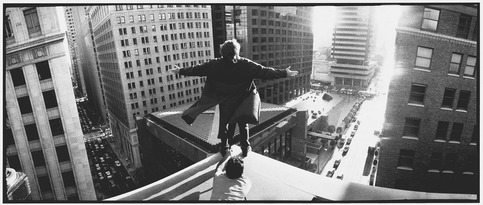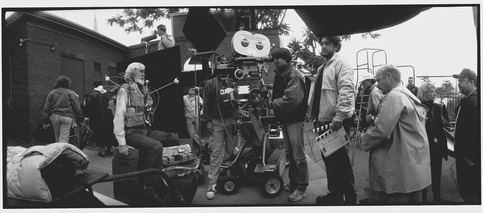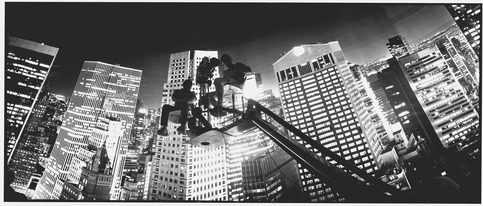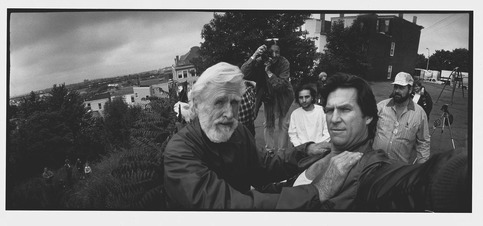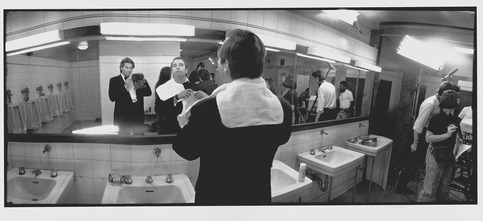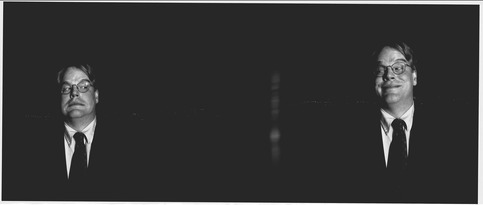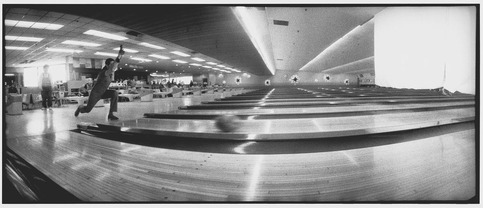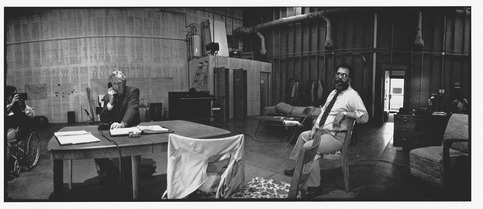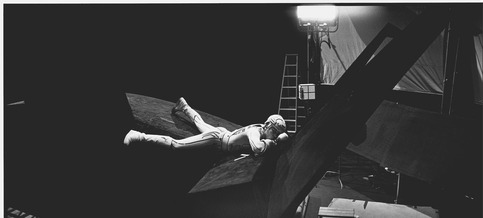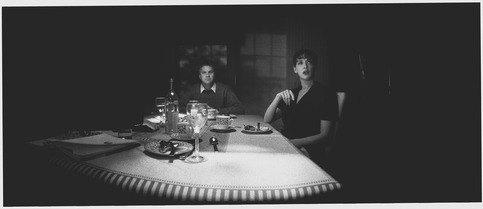THE DUDE HAS GOT A WIDELUX
BY WALL DONE, 05/05/2013
Some photographers are drawn to dramatic events in exotic lands. Others are compelled to stay closer to home and burrow into the stories they know best.
The actor Jeff Bridges gets to do both. He photographs the world he grew up in, movie sets — each one a world never seen before. And he earns a little more than your average photographer while doing it.
Since 1984, Mr. Bridges has documented the sets of most of his movies, compiling a large collection of wide images that give an intimate, behind-the-scenes look at movie making.
“My photography is mainly focused on my work making movies, which I’ve done my whole life,” he said in a phone interview. “I think I have a perspective that not many people have. And I get to take advantage of all of the strange sources of light on a set.”
Though Mr. Bridges is better known for his acting roles — The Dude in “The Big Lebowski,” Rooster Cogburn in “True Grit,” Kevin Flynn in the Tron movies — he received special recognition at the International Center of Photography’s Infinity Awards dinner in New York.
Mr. Bridges uses a Widelux camera for almost all of his photos because he says its ultrawide images are close to how the human eye really sees. It’s a quirky camera that allows photographers to emphasize both foreground and background. In the introduction to his book “Pictures,” published in 2003, Mr. Bridges wrote about his favorite camera:
The Widelux is a fickle mistress; its viewfinder isn’t accurate, and there’s no manual focus, so it has an arbitrariness to it, a capricious quality. I like that. It’s something I aspire to in all my work — a lack of preciousness that makes things more human and honest, a willingness to receive what’s there in the moment and to let go of the result. Getting out of the way seems to be one of the main tasks for me as an artist.
The Widelux has a lens mounted on a moving turret. As the lens moves, a slit shutter sweeps across a wide plane of film, creating a sometimes blurry cinematic effect. It can take two and a half seconds for a normal exposure (at one-fifteenth of a second). This gives the photographer less control of the result, because when one starts taking a picture, it is hard to know exactly what will happen two seconds in the future on the far side of the frame.
“I look at the camera as sort of a missing link between motion picture photography and still photography,” Mr. Bridges said.
Photography is different from movie making because it is more of a solitary endeavor, even when one is photographing a lot of people. But in both disciplines, the product doesn’t always turn out as expected.
“You show up, you practice, you have as much technique that you can bring, and then the reality has much to give to the experience,” Mr. Bridges said. “That’s what makes it such a joy to look at the contact sheets. You see what you thought you had and you did, and what you didn’t think you had and you got, and that’s very similar to making movies.”
His co-star Karen Allen suggested they make a book of photos for the cast, and for almost every film he has been in since then, Mr. Bridges has made a special, limited-edition book for the cast and crew.
His purchasable collection, “Pictures,” was published by PowerHouse Books, and he donates the proceeds — including from sales of individual prints — to the Motion Picture and Television Fund and several organizations that fight hunger in the United States. Source: James Estrin/NYT
All images © Jeff Bridges
--
Watch this ICP Special Presentation for some behind-the-scene talk from Mr. Bridges himself. Highly recommended.

